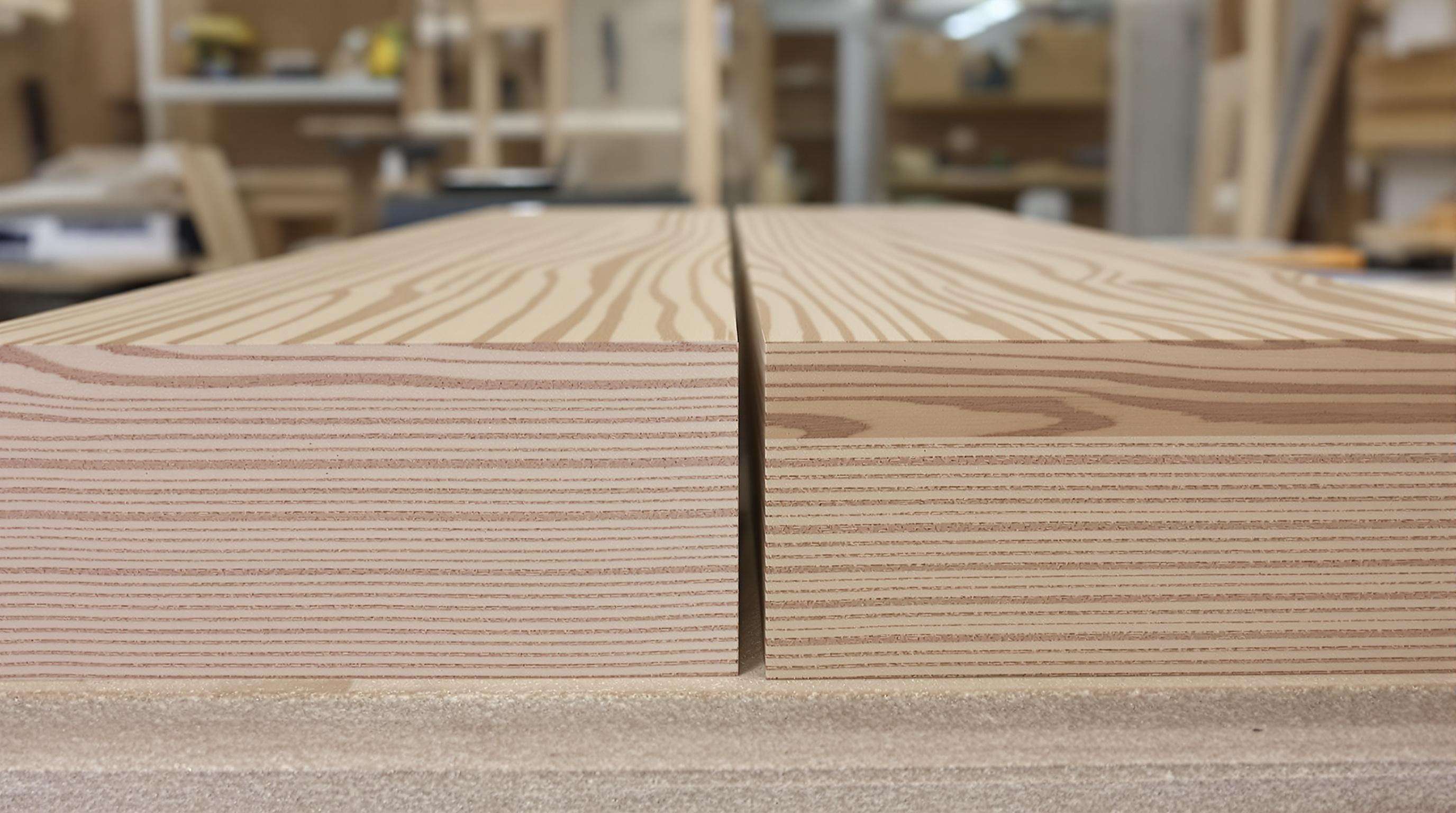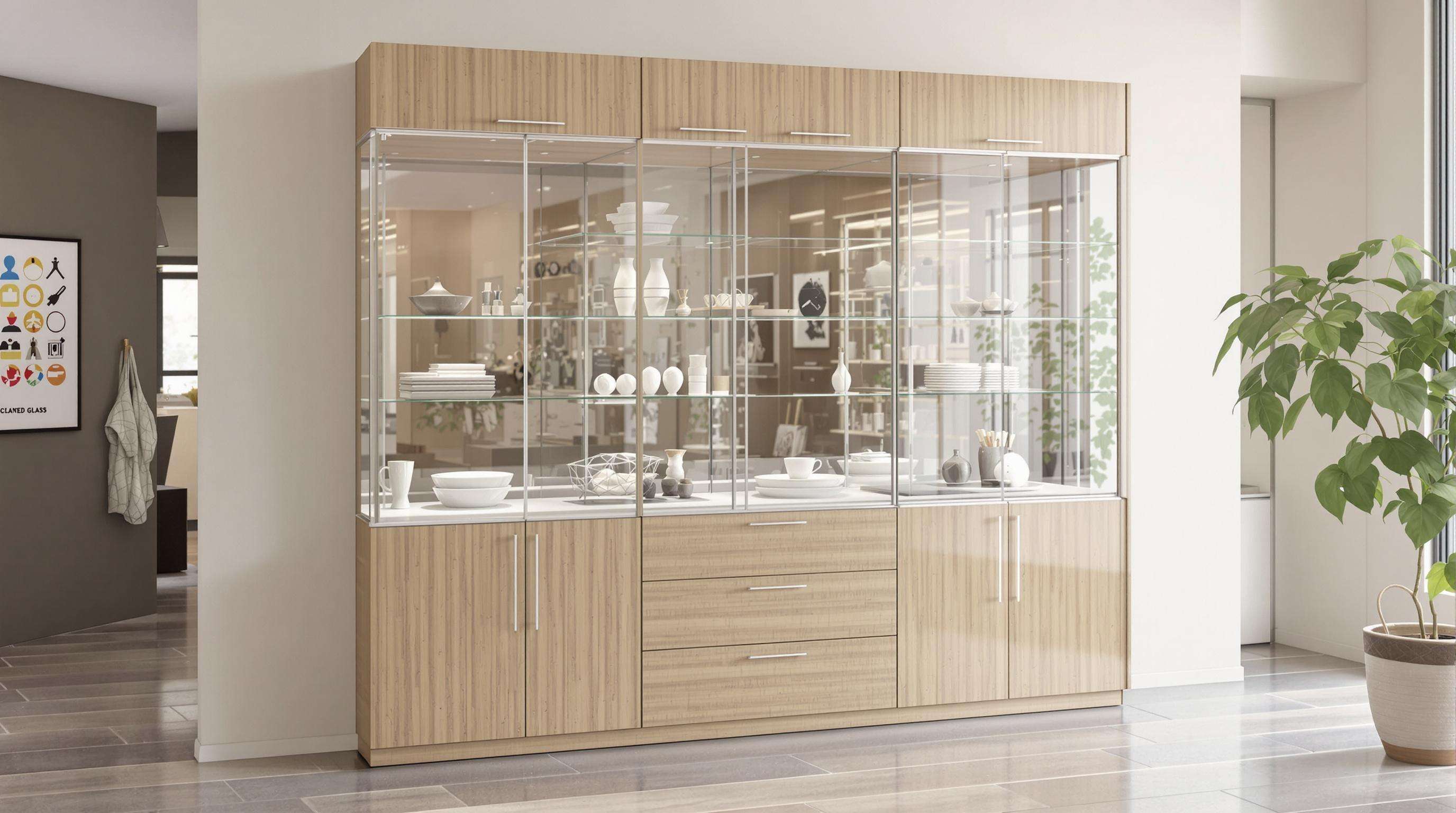Display Cabinet Materials: Pros and Cons Compared
Glass Display Cabinets: Aesthetic Appeal and Practical Considerations
Why Glass Is Popular in Modern Display Cabinet Design
Glass dominates contemporary display cabinet design by merging functionality with visual sophistication. Its transparency creates depth in small spaces while showcasing items—from dishware to retail products—making it a staple in both minimalist and luxury interiors.
Benefits of Visibility and Light in Glass-Front Cabinets
Glass-front designs amplify ambient light, reducing the need for artificial lighting by up to 40% during daylight hours. Frosted and textured variants maintain visibility while softening visual clutter, making them ideal for offices displaying awards or kitchens exhibiting curated dishware.
Tempered and Low-Iron Glass: Trends in Durability and Clarity
Tempered glass, five times stronger than standard annealed glass, is now commonly paired with low-iron formulations to eliminate greenish tints. These advancements meet commercial demands for shatter-resistant, crystal-clear displays and are increasingly favored in residential pantry cabinet doors for their clarity and safety.
Challenges: Maintenance, Privacy, and Smudges in Glass Doors
Fingerprints and smudges require frequent cleaning in high-traffic environments like kitchens and retail spaces. Clear glass also reveals disorganization—89% of designers recommend LED-lit smoked glass for semi-private displays that balance visibility with minimal upkeep, according to the 2024 Material Trends Report.
Best Use Cases: Retail Displays and Kitchen Glass Cabinets
Glass-front kitchen cabinets reduce dust exposure for frequently used items while enhancing the perception of space in compact layouts. Retailers report 22% higher customer engagement at glass display cases featuring rotating seasonal merchandise, highlighting their effectiveness in dynamic merchandising.
Solid Wood vs. Engineered Wood: Durability and Cost Trade-offs

Solid Wood: Natural Beauty, Strength, and Longevity
Solid wood brings something special to furniture that just cant be matched elsewhere. The unique grain patterns make each piece one of a kind, plus it holds together much better structurally. Research from the 2024 Furniture Durability Study shows solid wood takes impacts about 40 percent better than those engineered boards we see everywhere these days. Because of its natural density, wood allows for really deep carvings and can go through several refinishes across many years without losing quality. But there are tradeoffs. Solid wood typically runs anywhere from 30 to 50 percent higher in price compared to engineered alternatives mainly because good quality timber is getting harder to find and requires far more hands on work during manufacturing. Another thing worth mentioning is how wood reacts to changes in humidity levels. When placed in areas where the air gets above 55% relative humidity, solid wood tends to expand and contract naturally, which might cause doors to stick or not close properly over time.
MDF vs. Plywood: Performance in Humidity and Load-Bearing
Medium density fiberboard, or MDF as it's commonly called, gives surfaces a really smooth finish that works great for painting without costing too much money. The problem comes when there's too much humidity though. Tests show that once the air gets above 65% relative humidity, MDF starts swelling permanently. That makes it pretty unsuitable for places like kitchens where steam builds up or in areas with high moisture levels generally. Plywood is different because of how it's made with layers of wood glued together at right angles. This construction keeps things from warping so easily and can actually hold about 15 to maybe even 20 percent more weight sitting still compared to MDF. For people building cabinets to display heavier items like collectibles, plywood shelves just won't sag under the load like MDF ones tend to do over time.
Comparing Warping Resistance and Finish Quality
Wood in its solid form tends to warp when exposed to changes in humidity unless kept in controlled environments and properly sealed against moisture. Plywood stands out because of how it's built layer by layer, which makes it about three times better at resisting warping when conditions shift around. Medium density fiberboard gives really smooth surfaces that work great for those glossy paint jobs, though it does tend to show dents much quicker than other materials. What's interesting about solid wood is that it actually gains character as it ages with natural wear patterns developing over time. Veneered plywood on the other hand needs good quality edge banding applied carefully along all edges to stop the layers from coming apart and looking messy after installation.
When to Choose Solid Wood vs. Engineered Options
Opt for solid wood in stable environments where budget allows for heirloom-quality craftsmanship. Engineered materials are better for cost-sensitive or high-humidity applications:
- Plywood for structural reliability in modular systems
- MDF for budget-friendly, painted promotional units
- Hybrid designs with wood frames and glass panels offer optimal functionality and aesthetic balance
Cabinet Finishes and Their Impact on Long-Term Durability
Matte, Glossy, and Textured Finishes: Pros and Cons
Matte finishes help cut down on glare and hide those little scratches that everyone gets annoyed about, which makes them great for places where lots of people walk around all day. Glossy surfaces reflect light better, so products stand out more in stores, maybe even up to half again as visible compared to matte ones. But these shiny surfaces need constant wiping to stay clean looking, something store managers know all too well. Then there are textured options like brushed metal or wood with raised patterns that feel good to touch and don't show fingerprints so easily. These work particularly well at trade shows where folks want to run their hands over displays, or in classrooms where kids tend to leave marks everywhere.
Scratch, UV, and Moisture Resistance by Finish Type
Polyurethane-coated finishes offer 85% better scratch resistance than untreated wood, based on accelerated wear testing from the 2023 Coatings Study. UV-resistant lacquers block 90% of fading in sun-exposed areas, essential for museum cabinets housing light-sensitive artifacts. Powder-coated metal finishes outperform traditional paints in humidity, maintaining integrity at 85% relative humidity.
Maintaining Finish Integrity in High-Traffic Display Areas
For display cabinets in airports or lobbies, implement quarterly maintenance:
- Matte surfaces: Clean with pH-neutral solutions to prevent dulling
- Gloss finishes: Use microfiber cloths to avoid swirl marks
- Textured panels: Employ soft-bristle brushes for crevice cleaning
Proper care extends finish lifespan by 3–5 years, reducing annual replacement costs by $18–$27 per square foot.
Innovations in Sustainable and Mixed-Material Display Cabinets

Eco-Friendly Materials: Bamboo, Recycled Glass, and FSC-Certified Wood
The push for sustainability has really changed how we approach display cabinet design lately. Take bamboo for instance. It grows back in just 3 to 5 years, which is actually about half the time it takes oak trees to mature. That makes it a great renewable option for hardwood cabinets, even if we do need to reinforce certain parts that bear weight. Retail stores across the country are starting to incorporate recycled glass panels too. About a third of all new installations now feature these panels, cutting down on what ends up in landfills while still looking clear and clean. Many manufacturers have switched to FSC certified wood sources because they want to know their materials come from responsibly managed forests. This stuff lasts longer in busy spaces like shopping malls where people constantly bump into displays. When combined, these eco friendly choices cut carbon emissions somewhere around 35 to 40 percent when compared to traditional materials according to recent industry reports from early 2024.
Combining Glass, Metal, and Wood for Visual Depth
Mixed-material designs overcome the limitations of single-material construction:
- Metal frames reinforce glass shelves, increasing load capacity by 200%
- Wood accents dampen vibration in medical display cases with glass fronts
- Integrated LED strips accentuate textures without UV damage
This synergy enables 22% greater customization in hospitality displays while preserving structural performance, according to commercial fixture testing.
Designing Cohesive, Sustainable Display Cabinets for B2B Spaces
B2B spaces demand durability and aesthetic cohesion. Modular systems combining FSC-certified oak frames with laminated safety glass meet these needs. A 2023 commercial interiors survey found 68% of businesses now require at least two sustainable materials in procurement. Innovations include:
- Quick-swap panel systems for seasonal retail updates
- Antimicrobial coatings on bamboo surfaces for food-safe displays
- Standardized component sizing to minimize waste during replacements
These features reduce lifecycle costs by 18% and contributed to carbon-neutral certification in 12% of new corporate installations last year.
FAQ
What are the main advantages of using glass in display cabinets?
Glass provides transparency that showcases items effectively while enhancing the depth of small spaces, making it ideal for both minimalist and luxurious interiors.
How do glass-front cabinets enhance light and visibility?
They allow ambient light inside, reducing artificial lighting needs by up to 40% and maintaining visibility with frosted or textured variants to diminish clutter.
What are the challenges associated with maintaining glass cabinets?
Frequent cleaning is needed for fingerprints and smudges, and clear glass can reveal disorganization.
What should be considered when choosing between solid wood and engineered wood for display cabinets?
Solid wood is chosen for its natural beauty and durability, while engineered wood like MDF and plywood is more suited for high-humidity or cost-sensitive applications.
How do different cabinet finishes affect long-term durability?
Matte finishes reduce glare and hide imperfections, glossy finishes enhance visibility but require maintenance, and textured finishes are fingerprint-resistant but interactive.
